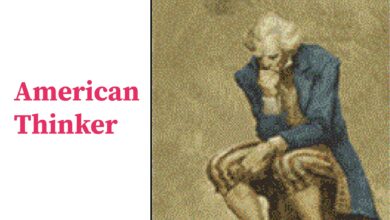How to Use Prayer Wheel: The Comprehensive Guide

The prayer wheel, or “Mani Wheel” as it is known in Tibetan Buddhism, is more than just a spiritual artifact; it is a powerful tool for meditation, prayer, and the accumulation of merit. Whether you are new to this ancient practice or looking to deepen your understanding, this comprehensive guide will walk you through everything you need to know about using a prayer wheel.
What is a Prayer Wheel?
A prayer wheel is a cylindrical machine usually made of wood, metal, etc., with the ability to rotate around its center based on an axis allowing practitioners to spin it rapidly through their whole-bodied turns. Such a cylinder is usually inscribed with sacred mantras, in particular, the mantra ‘Om Mani Padme Hum,’ associated with Avalokiteshvara, Bodhisattva of Compassion. Prayer wheels, filled with mantras, are spun to amplify the power of prayers through repeated rotation. It is said that by turning the wheel, these mantras are released as innumerable blessings into the world to purify negative karma and accumulate great merit.
Types of Prayer Wheels
There are several types of prayer wheels, each serving different purposes and offering unique spiritual benefits:
Hand-Held Prayer Wheels: They are personal use wheels since they can be held with a handle and moveable. These are as a rule grasped by Tibetan Buddhists in the ordinary course of their life – where they would religioin and instead start to think about wherever.
Larger, Stationary Prayer Wheels: Monasteries have large stationary prayer wheels positioned on an axis. These are often arranged in rows with many wheels. Pilgrims typically spin these during a circumambulation process, enhancing the spiritual ambiance of the circle.
Water, Wind, and Fire Wheels: These types of prayer wheels do not require human effort to keep spinning, as they are powered by natural elements. For example, water wheels are placed in rivers, and wind wheels are designed to spin with the breeze, symbolizing the continuous flow of prayers.
Spiritual Significance and Symbolism
A prayer wheel is a cylindrical “wheel” inscribed with mantras that contain sacred Buddhist messages. It represents the wheel of life and the endless cycle of existence, with each turn acting as a prayer for the freedom of all living beings from suffering. Spinning the wheel clockwise aligns your energy with the rhythm of time.
How to Use a Prayer Wheel
Using a prayer wheel is a simple yet profound practice that can be incorporated into your daily spiritual routine:
Prepare Your Space: Start by finding a quiet spot where you will not be disturbed. Also, if you use a large prayer wheel at a temple or stupa, make sure to go with respect and full presence.
Hold the Wheel Properly: When using a hand-held prayer wheel, firmly hold the handle, allowing the wheel to hang freely. Ground yourself for a moment, and set intentions with preliminary prayers or mantras if you wish.
Spin the Wheel Clockwise: Spin the wheel in a clockwise direction. Following the path of the sun’s rays, this movement spreads all across, representing the dissemination of Buddha’s teachings. Imagine the mantras within this spinning wheel emitting blessings and positive vibrations in all directions while you spin it.
Recite Mantras: You can chant mantras in your mind or by speaking them out loud while spinning the wheel. The mantra most frequently associated with prayer wheels is “Om Mani Padme Hum.” This combination of movement and mantras is quite useful because it provides a way to be more open-minded and focus deeply on the spiritual practice.
Dedicate the Merit: After your session, dedicate the merit gained to benefit all beings. This act of selflessness amplifies the spiritual benefits of the practice, fostering compassion and a connection to the greater good.
Benefits of Using a Prayer Wheel
Engaging with a prayer wheel offers numerous benefits, both spiritual and physical:
Spiritual Purification: The major importance of using a prayer wheel is to clear negative karma. The action of spinning in itself is said to release the power of these mantras into space, for purification through a physical practice.
Accumulation of Merit: They spin the wheel nonstop to gain merit, essential for spiritual progress in Buddhism. It also can be dedicated for oneself as well as others; it will by and large have more positive effect.
Mindfulness and Meditation: The even, continuous turning of the wheel can also encourage contemplation and create a sense of inner calm; it is common for people to turn prayer wheels on behalf of those not able to do so in person. It is especially useful for those who find it difficult to practice meditation the usual way.
Physical Benefits: Spinning a prayer wheel also has physical benefits, including better hand-eye coordination and serving as an easy way to get some exercise that can help with dexterity and motor skills.
Integrating Prayer Wheels into Daily Life
Incorporating the use of a prayer wheel into your daily routine can be a transformative experience. Here are a few tips on how to make this practice a regular part of your life:
Morning Ritual: Start your day by spinning a hand-held prayer wheel as part of your morning meditation. This sets a positive tone for the day and aligns your intentions with your spiritual goals.
During Breaks: Use a portable prayer wheel during breaks at work or throughout your day. A few minutes of spinning can help refocus your mind and reduce stress.
Evening Reflection: End your day by spinning the prayer wheel while reflecting on your actions and thoughts. This practice helps to purify any negative energies accumulated during the day and promotes restful sleep.
The Bottom Line
The prayer wheel serves as a significant spiritual device, which aids you in fostering the mindfulness of enlightenment and merits. Using a prayer wheel, big or small, connects you with ancient Buddhist teachings. Using the prayer wheel daily brings peace, compassion, and spiritual health, connecting us with all beings.





